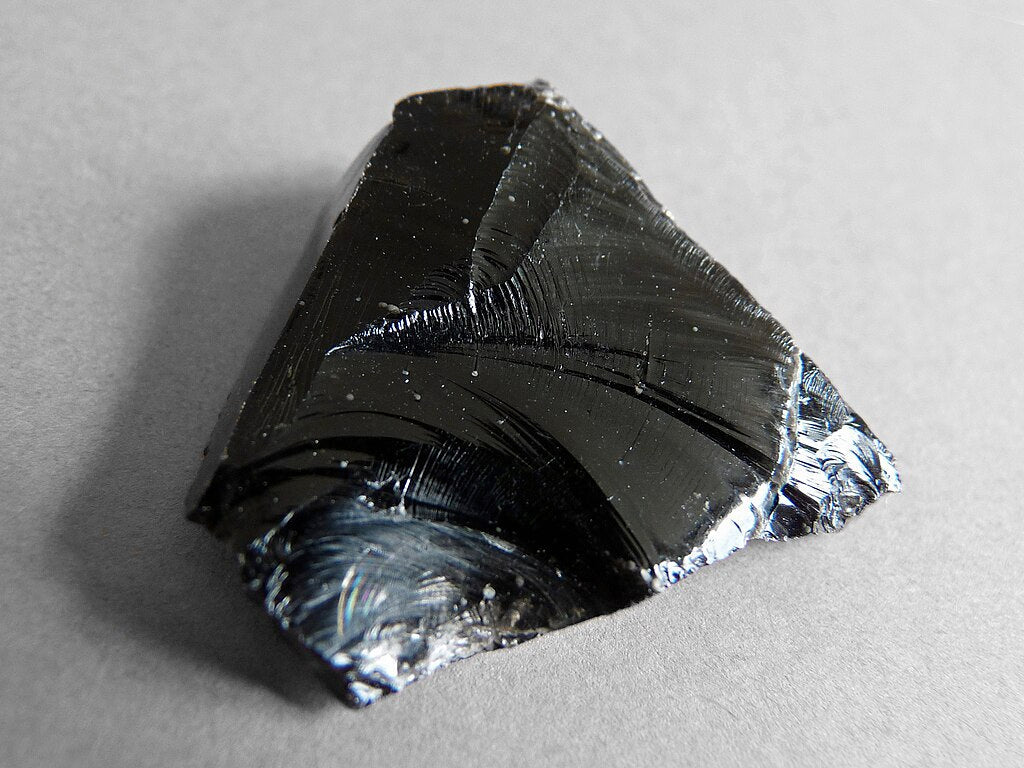
Obsidian Meaning Guide
Share
What is Obsidian?
Obsidian is a naturally occurring volcanic glass formed from rapidly cooled lava. Its smooth, dark surface has been revered since ancient times for its powerful protective and grounding properties. Often referred to as the "mirror stone," Obsidian is believed to reveal truths, promote self-reflection, and aid in releasing emotional blockages.
Zodiac, Element & Chakras
Zodiac Signs: Scorpio, Capricorn
Element: Water
Chakras: Root
Meanings and Symbolism
Obsidian is associated with:
Protection: Shielding against negativity and psychic attacks.
Grounding: Anchoring the spirit to the body and the Earth.
Clarity: Revealing hidden truths and promoting self-awareness.
Transformation: Facilitating personal growth and emotional healing.
When to Use Obsidian
Obsidian is ideal for:
Releasing negativity and emotional blockages
Seeking protection and grounding energy
Gaining mental clarity and dissolving confusion
Promoting self-discovery and transformation
Uses of Obsidian
Jewelry: Wearing Obsidian as necklaces, bracelets, or rings to keep its protective energy close.
Meditation: Holding Obsidian during meditation to ground energy and facilitate deep introspection.
Home Decor: Placing Obsidian stones in living spaces to absorb negative energies and promote a harmonious environment.
Crystal Grids: Incorporating Obsidian into grids to support intentions related to protection and transformation.
Healing Properties and Benefits
While not scientifically proven, Obsidian is traditionally believed to offer:
Emotional Healing: Assisting in releasing trauma, grief, and resentment.
Mental Clarity: Enhancing focus, decision-making, and insight.
Physical Well-being: Supporting detoxification and improving circulation.
Spiritual Growth: Encouraging self-discovery and the release of limiting beliefs.
Q&A Section
Q: How do I cleanse and charge Obsidian?
A: To cleanse Obsidian, rinse it under lukewarm water and dry it with a soft cloth. To charge, place it under moonlight or bury it in the earth overnight to rejuvenate its energy.
Q: Which chakras does Obsidian align with?
A: Obsidian primarily aligns with the Root chakra, facilitating grounding and stability.
Q: Which element is Obsidian associated with in the 5 elements?
A: In the context of the five elements, Obsidian is associated with the Water element, symbolizing emotional depth and purification.
Q: What zodiac signs is Obsidian associated with?
A: Obsidian is traditionally linked to Scorpio and Capricorn, complementing their introspective and disciplined natures.
Q: Can Obsidian be worn every day?
A: Yes, Obsidian can be worn daily. Its durable nature makes it suitable for everyday wear, allowing you to benefit from its protective energies consistently.
Q: Is Obsidian safe in water?
A: While Obsidian can be briefly rinsed, prolonged exposure to water is not recommended as it may affect the stone's appearance and integrity.
Q: Can I combine Obsidian with other crystals for enhanced effects?
A: Yes, combining Obsidian with stones like Clear Quartz or Amethyst can amplify its grounding and protective properties.
Q: Which hand should I wear an Obsidian bracelet on?
A: In crystal healing practices, wearing an Obsidian bracelet on the left hand (receiving hand) is believed to absorb its protective energies, while wearing it on the right hand (giving hand) may help project its grounding energies outward.
Q: What does it mean when an Obsidian bracelet breaks?
A: Metaphysically, a broken Obsidian bracelet may indicate that the crystal has absorbed significant negative energy or fulfilled its purpose. It's often seen as a sign to reflect on your current life circumstances and consider acquiring a new crystal.
Q: Who can wear an Obsidian bracelet?
A: Anyone seeking protection, emotional healing, or grounding can benefit from wearing an Obsidian bracelet. It is suitable for individuals from all walks of life.
Q: What colors does Obsidian come in?
A: Obsidian typically exhibits a deep black hue, but variations include Snowflake Obsidian (black with white inclusions), Mahogany Obsidian (reddish-brown), and Rainbow Obsidian (iridescent).
Q: How is Obsidian created?
A: Obsidian forms through the rapid cooling of felsic lava from volcanic eruptions, resulting in its glassy texture.
Q: Where is Obsidian found?
A: Major sources of Obsidian include the United States, Mexico, Iceland, and Japan.




